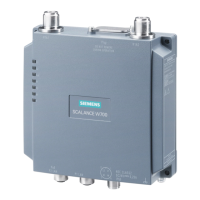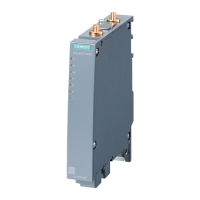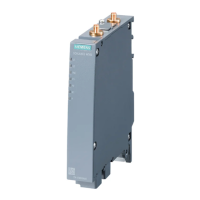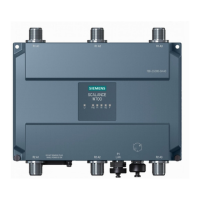Syntax
Call up the command with the following parameters:
deny icmp {any | host <src-ip-address> | <src-ip-address> <src-
mask>} [{any | host <dest-ip-address> | dest-ip-address> <dest-
mask>}] [<message-type type(0-255)>] [<message-code code(0-255)>]
The parameters have the following meaning:
Parameter Description Range of values / note
any Blocks all incoming frames -
host Keyword for a an individual IPv4 ad‐
dress
-
src-ip-address Source IPv4 address Enter a valid IPv4 address.
src-ip-address Network source address Enter a valid combination of IPv4
address and subnet mask.
src-mask Corresponding subnet mask
any Blocks all outgoing frames -
host Keyword for a an individual IPv4 ad‐
dress
-
dest-ip-address Destination IPv4 address Enter a valid IPv4 address.
dest-ip-address Network destination address Enter a valid combination of IPv4
address and subnet mask.
dest-mask Corresponding subnet mask
message-type Keyword for the ICMP message type -
type ICMP message type 0 ... 255
message-code Keyword for the ICMP message code -
code ICMP message code 0 ... 255
For information on names of addresses and interfaces, refer to the section "Interface identifiers
and addresses (Page 29)".
Result
The IP access control list for ICMP messages has been configured.
Note
Subnet mask for individual hosts
If you create the rule for a single system (one IPv4 address), specify the subnet mask
"255.255.255.255". As an alternative, you can specify the keyword "host" followed by the IPv4
address.
Further notes
You delete an IP access control list with the no ip access-list standard <acl-
num> command.
Security and authentication
11.5 IP access control list
SCALANCE W770/W730 acc. to IEEE 802.11n Command Line Interface
568 Configuration Manual, 09/2017, C79000-G8976-C324-08

